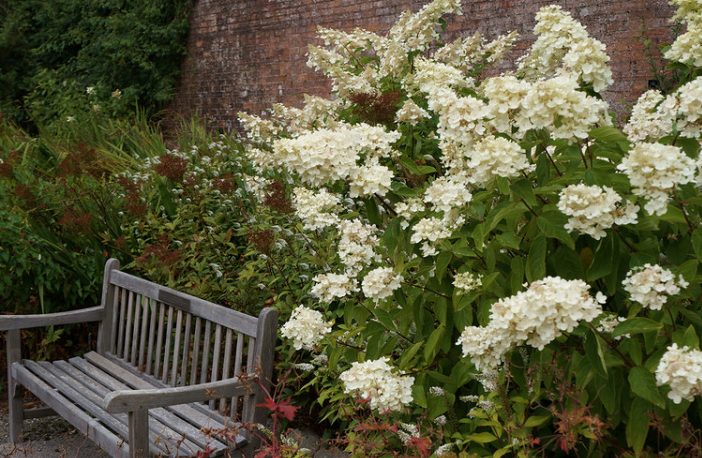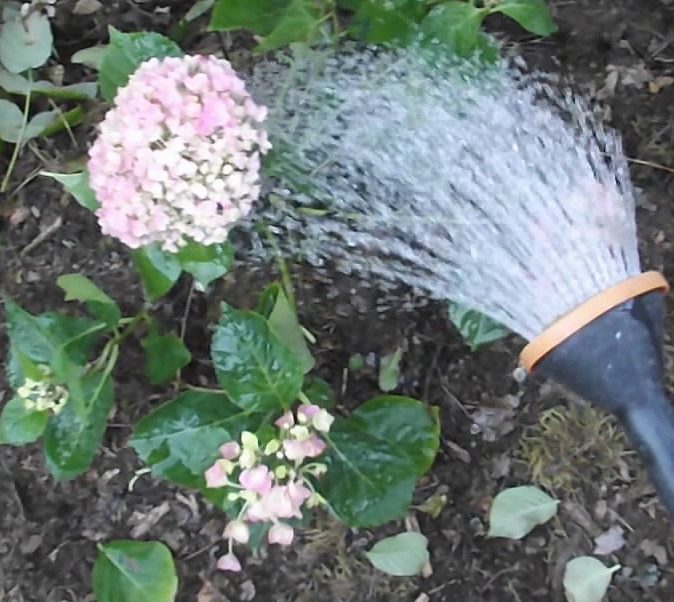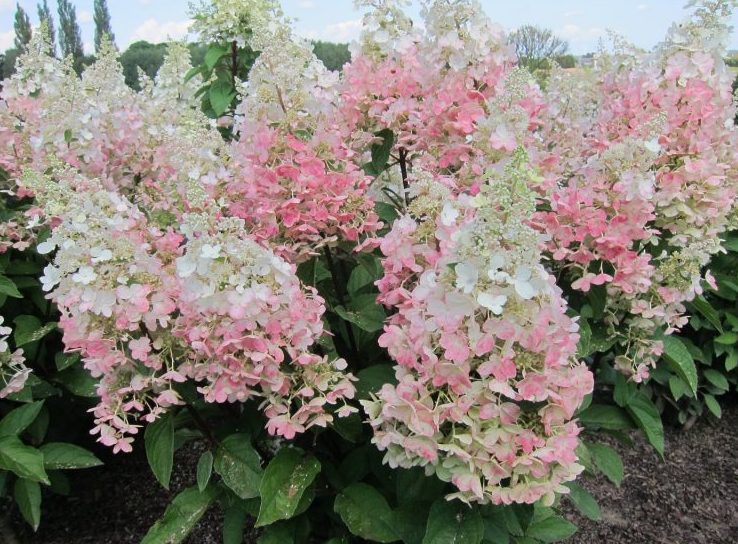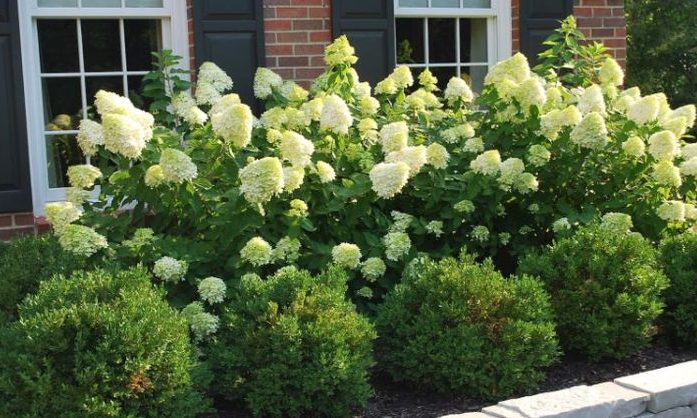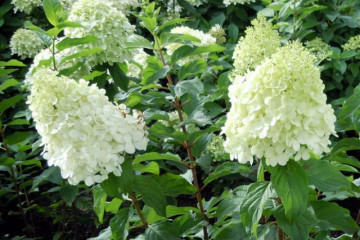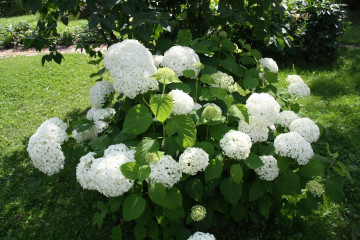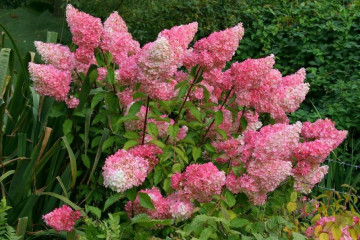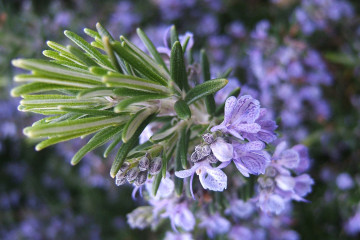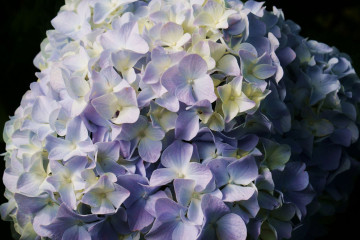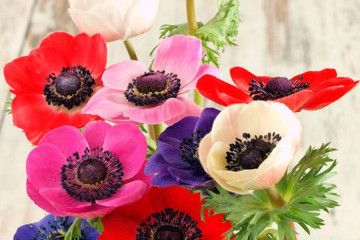Hydrangea Candelite - description and cultivation of the variety in the open field
Content:
Hydrangea Candelite is a gorgeous plant with bright and unusual inflorescences. It is tolerant of frost and scorching sun. He loves moisture and is demanding for feeding, especially during the growing season. A description of this beautiful shrub and detailed information on agricultural technology is given below.
Description of hydrangea Candelite
The Candelite hydrangea variety (Hydrangea paniculata Candlelight) was bred by scientists from Holland. The plant got its name from its appearance, reminiscent of the light of a burning candle (English candle - "candle", light - "light"). If you translate the Latin name according to the rules, you get the Candlllight panicle hydrangea.
The height of the shrub rarely exceeds 1.5 m, the length of the trunk is 60 cm. The diameter of the flowering spreading crown can reach 2 meters.
Conical large inflorescences include many sterile small flowers as well as small flowers (fruiting). The fruits are small capsules in which the seeds are stored. Despite the fact that Candelite loves the sun, an area with light partial shade would be an ideal landing site.
The soil should be chosen moderately moist, acidic and always drained. Despite the fact that it is a frost-resistant variety, young bushes should be covered for the winter.
The culture refers to ornamental shrubs with an unusual color. Flowering continues until the first frost. Throughout the season, hydrangea pleases the owner's eye and brings pleasure to the household.
Description of inflorescences and leaves:
- The leaves are elliptical with small denticles and prominent veins. The color is deep dark green.
- The color of the inflorescences changes over the season: during flowering - yellowish-green, at the height of the season - golden or bright yellow, in autumn - pinkish or reddish.
Application:
- The plant is widely used for indoor decoration. A properly dried branch will stay in the vase for a long time without shedding.
- Due to their spectacularity and originality, bushes are often used in landscape design. Looks great as a stand-alone plant, or in the vicinity of other ornamental grasses and shrubs.
- The variety is widespread among amateur gardeners, summer residents and professionals. Florists love to plant bushes because of the possibility of creating beautiful live bouquets, as well as dry compositions.
Planting varieties in the ground
The Candelite panicle hydrangea will delight flower growers with a spectacular look, if you choose the right planting site for it and take regular care of it. Having received the ideal place, the bushes will delight with their flowering for decades. Do not forget about abundant watering and feeding.
With proper care, the lifespan of a culture is 50 years or more.
Choosing the right place
Choosing the right place with proper soil and enough light is an important moment for the grower. It is worth remembering that "moving" for shrubs is undesirable, so you need to take care of the permanent "residence" of the bushes in advance.
The best place would be a sunny side without drafts.Despite the fact that the variety loves the sun, an area with light partial shade is also suitable for planting.
You should not choose an area with trees for planting so that their roots do not take all the moisture from the soil. Land with an excess of groundwater will not work. It would be more correct to water the bushes on your own and regularly. And it is imperative to equip drainage protection.
Soil for hydrangea Candelite
The soil is chosen moderately moist, acidic and always drained. Despite the fact that it is a frost-resistant variety, young bushes should be covered for the winter.
A prerequisite for the Candelite variety is an acidic soil, since the charm of an ornamental culture is lost when alkalizing. Not suitable for planting sandy soil.
Planting process
Dig a hole for planting in advance. It is important that it is spacious. When it is planned to plant 2 or more bushes at the same time, then a distance of 3 m should be observed between them.Hydrangea Candelite loves moisture, the earth is watered abundantly and a mixture consisting of sand, humus, fertile soil and peat is added to the hole (1: 1: 2: 2), with the addition of the following elements:
- urea - 25 gr;
- potassium sulfate - 25 g;
- superphosphate - 65 gr.
After mixing, it is necessary to wait for the soil to settle. Then the seedlings are prepared for planting. The roots are straightened, then placed in a hole and added dropwise. It is impossible for the entire root collar to go into the ground. It should be slightly on the ground. Further, they crush the ground a little and carry out abundant watering.
It is important to carry out near-trunk mulching using needles, leaf humus or sour peat. This will trap moisture and prevent it from evaporating.
Reproduction of panicle hydrangea
There are several ways to grow Candlelight panicle hydrangea:
- cuttings;
- seeds;
- layering;
- seedlings;
- dividing the bush, etc.
The first two methods are less popular, they are usually used when it is not possible to find seedlings. But do not forget that the plant will bloom only in the second or third year. Seed propagation involves the seedling method.
When grafting, you should follow some rules for collecting planting material. Future seedlings begin to be harvested in the summer. It is better to choose noon, since at this time the plant has a sufficient amount of moisture and natural forces.
Shoots are selected closer to the bud, the distance should not exceed 2 cm. Then the shoot is sent to a special solution in water, with the addition of substances that promote root growth. When cutting a shoot with leaves, they can be removed, or part of them can be left.
When roots appear, cuttings are planted in separate containers. The containers are filled with soil with the addition of a small amount of sand. The ratio is 2: 1.
The best planting material will be five-year-old seedlings. They will begin to delight gardeners with a lush crown of flowers in the year of planting. They are usually planted in the spring, but can also be planted in the fall.
Variety care
Candlelight is a hydrangea, the description of which says that it is very responsive to care. She needs moist soil, so regular watering is a must, especially during the dry season of summer. For a beautiful flowering, the bushes will need additional feeding.
Watering and fertilizing
For the preservation of moisture after abundant watering for a long time, it is necessary to sprinkle the root plot of land with organic matter in the form of peat, bark, etc. Despite the fact that the plant is moisture-loving, an excess of water is unacceptable. Moderation is important.
The soil for the culture is chosen fertile with an acid reaction, eliminating the oversaturation of the soil with alkali. Plant feeding is required at least four times.
- In the spring, before the flowering of the bush, fertilizers are added in the form of bird droppings, horse manure, etc.
- When forming buds, you will need to feed the bush with a prepared mixture, which includes 35 g of superphosphate, 35 g of potassium sulfate and 25 g of urea. All substances are mixed in 10 liters of water. This calculation of the mixture is poured under the root of the panicle hydrangea.
- At the height of the summer season, complex mineral fertilizers will be required.
- Before preparing for wintering, the land is fed with special preparations containing phosphorus and potassium salts. This increases frost resistance.
Shrub pruning
Hydrangea Candelite is pruned in March, before the process of sap flow begins, that is, before it wakes up from hibernation.
Bushes are formed, consisting of 5-7 strong healthy shoots. Only 5-6 buds are left on them, the rest is cut off.
If the plant is old, it should be rejuvenated by cutting off all shoots, leaving 7 cm from the soil surface.
Possible problems
Poor attention to culture brings with it the spread of various pests. This affects the appearance of Candelite.
If the inflorescences begin to dry quickly, then the cause is most likely due to insects feeding on the sap of the plant. For example, aphids are able to "squeeze" all "vitality" out of the bush. To prevent this from happening, it is important to carry out an insecticide treatment. The procedure is performed early in the morning or late in the evening to avoid sunburn.
Problems can arise when the earth dries out. The variety requires not only regular watering, but also spraying of the bush itself.
When brown spots appear on the leaves, it means that the hydrangea should be protected from direct sunlight.
Preparing for winter
The variety is frost-resistant, therefore it tolerates winter with dignity. He does not need to create additional means of protection, with the exception of young bushes up to 3 years old.
But to be on the safe side, many gardeners mulch the soil and cover it with a special burlap before the cold weather.
Hydrangea Candelite is not difficult to grow on the site, although you have to make a little effort so that the plant responds with gratitude to the due care and decorates the area with graceful flowering.

